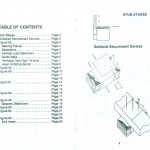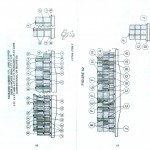CN 557636 is one of several of these double door CN boxcars shots in the same train in August 2004 at Sault Ste. Marie.
Part of series CN 557440-557739 built in 1974 (and identical sister series 557300-557439 built the previous year), these 52’6″ I.L. cars were built for lumber and forest products service and when new had the main sliding door painted green as a colour coding to indicate this assignment. (Here’s one in 2006 with the original paint including the green door intact.) With modern computerized systems this indicator is no longer needed and most of these cars gradually had the doors repainted the same brown as the rest of the car.
For modelling in HO scale, Kaslo shops produced (produces?) a resin kit for this type of car. (I have two on my shelf to be built up and put into service.)
This car and many other double door boxcars in the train are likely loaded with either plywood or OSB from mills at Hearst or Limer.


















